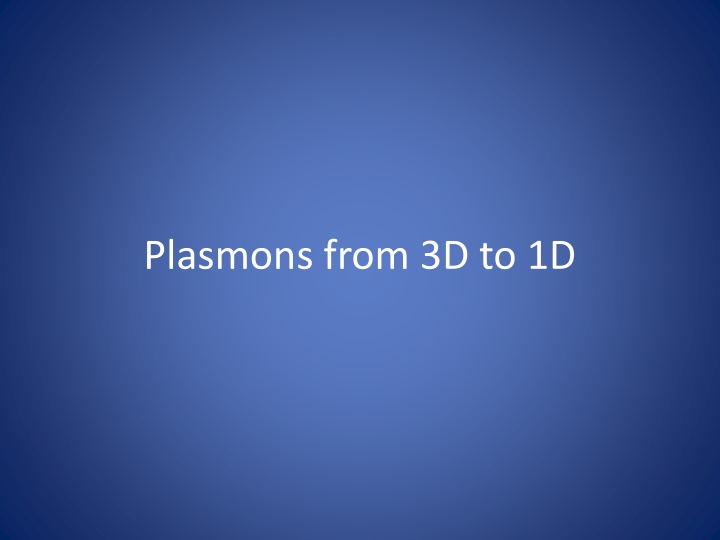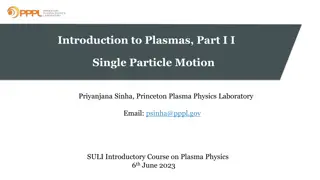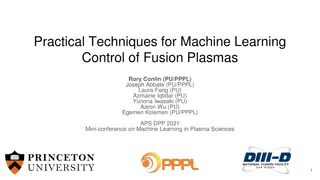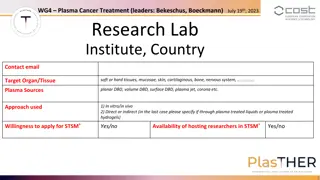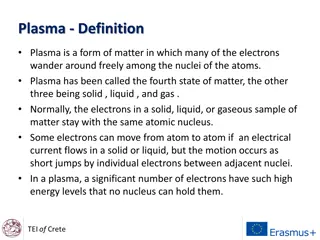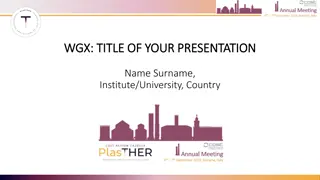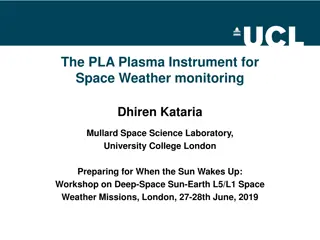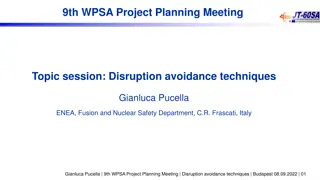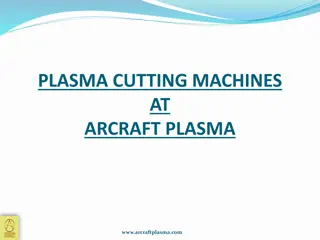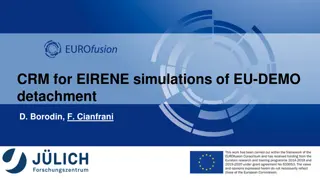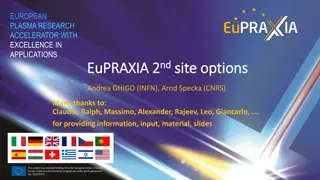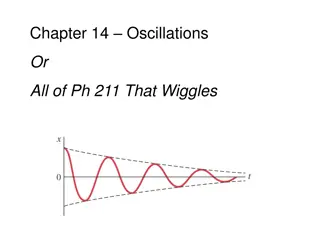Plasmons and Plasma Oscillations in Solid-State Physics
The fascinating world of plasmons in solid-state physics, from their transition from 3D to 1D structures to their behavior in metal valence electrons described by the Drude-Lorentz model. Learn about dielectric function, reflectivity, Maxwell's equations, and the interaction of light with plasmons. Delve into the concepts of plasma oscillations, surface plasmons, and the excitation of plasmons through inelastic scattering techniques. Discover the localized nature of surface plasmons at the interface of plasma and dielectric materials. Engage with a visual journey through images and explanations, culminating in a deeper understanding of these phenomena.
Download Presentation

Please find below an Image/Link to download the presentation.
The content on the website is provided AS IS for your information and personal use only. It may not be sold, licensed, or shared on other websites without obtaining consent from the author.If you encounter any issues during the download, it is possible that the publisher has removed the file from their server.
You are allowed to download the files provided on this website for personal or commercial use, subject to the condition that they are used lawfully. All files are the property of their respective owners.
The content on the website is provided AS IS for your information and personal use only. It may not be sold, licensed, or shared on other websites without obtaining consent from the author.
E N D
Presentation Transcript
Motivation Stained glass rose window Notre Dame de Paris
Drude-Lorentz-Model Valence electrons of metals can be described as a free electron gas Damping is explained through collisions with the nuclei which are fixed
Dielectric function and plasma frequency The angular frequency of the electron density oscillating around the average density is called plasma frequency ? The dielectric function depends on the angular frequency 2 ? 2 for most metals ?is in the ultraviolet region ? = 1
Reflectivity R= | 1 +1| with = R is 1 for ? decreasing for > ? 0 for = ?
Plasma oscillations Equation can be split up in an transverse and longitudinal part 2?? ?2+ ? 2?? ?2+ ? The longitudinal part corresponds to the harmonic oscillator 2?? ?2 ??= 0 transverse part 2??= 0 longitudinal part
Plasma oscillations Transverse solution ?2?2= 2 ? 2 Longitudinal solution = ?
Plasmons Light = transverse wave Plasmon = longitudinal wave => plasmons can not be excited directly by light but by techniques of inelastic scattering ????= ???- n ?
Surface Plasmons Localized at the interface between a plasma and a dielectric Have transversal and longitudinal electric field components
Sources Optical Properties of Solids (Oxford Master Series in Physics) - Mark Fox Principles of Optics: Electromagnetic Theory of Propagation, Interference and Diffraction of Light - M. Born, E. Wolf Plasmonics: Fundamentals and Applications Stefan Alexander Maier http://webstaff.itn.liu.se/~alira/hjo_coe_seminar.ppt http://web.pdx.edu/~larosaa/Applied_Optics_464- 564/Lecture_Notes_Posted/2010_Lecture- 7_SURFACE%20PLASMON%20POLARITONS%20AT%20%20ME TALINSULATOR%20INTERFACES/Lecture_on_the_Web_SURFA CE-PLASMONS-POLARITONS.pdf
